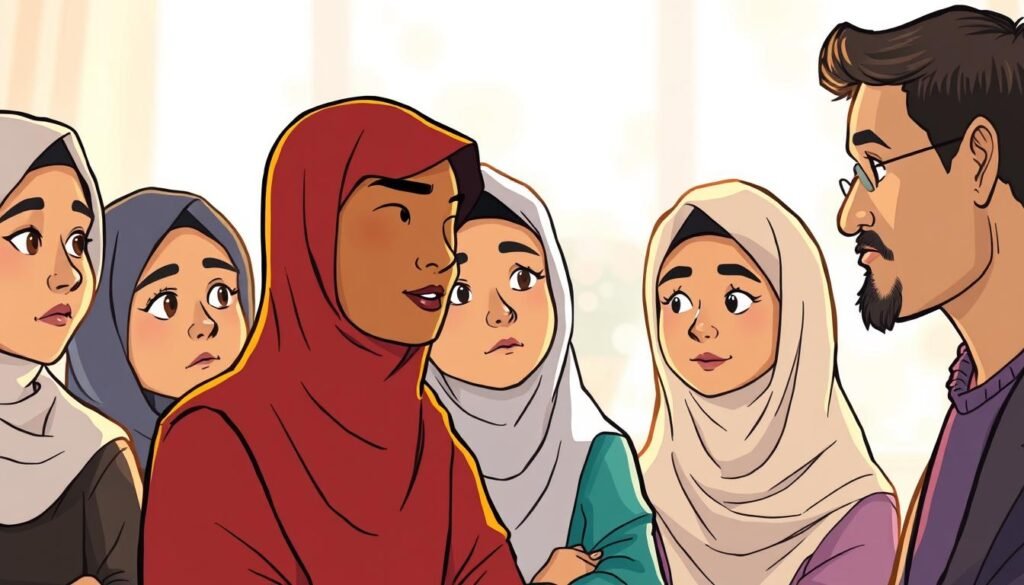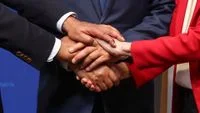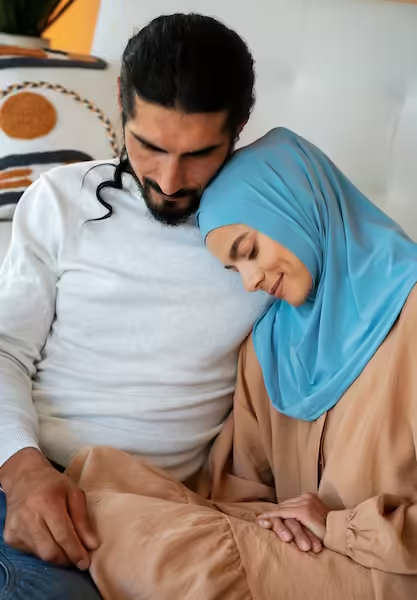When I saw a non-Muslim friend wear a scarf, I thought: Is it more than just a fashion choice? This led me to learn about faith, culture, and identity tied to the hijab. In the U.S., like in Dearborn, Michigan, wearing the hijab is a personal choice. But in Saudi Arabia, it’s a law.
What if someone outside these traditions wears the hijab? The debate is not just about fashion. It’s about respect versus curiosity, and if wearing the hijab as a non-Muslim is cultural appropriation. Some see it as a way to connect; others worry it’s just a trend.
In Turkey, women once hid their heads to get an education. Now, some non-Muslims wear it as a style. How do we respect and understand this tradition? Scholars and hijabi women say intention is key. But where’s the line between respect and misunderstanding?
Let’s ask: Can cultural exchange be respectful when power and history are uneven? What do non-Muslims gain or risk by wearing symbols like the hijab?
Understanding What the Hijab Represents in Islam
The hijab is more than just a piece of cloth. It’s a symbol of faith for many Muslim women. It stands for modesty, dignity, and a promise to God. The Quran teaches that both men and women should be modest.
The Religious Significance of Hijab
At the heart of the religious significance of hijab is Surah An-Nur 24:31. It tells women to cover their bodies with their clothes. Over time, this has led to different ways of wearing the hijab. Some see face-covering as optional, but headscarves are widely accepted.
Different Types of Islamic Head Coverings
In the Gulf, women wear a light shayla. In Iran, they wear a khimar. In Indonesia, they have colorful jilbab styles. These show how different cultures adapt to their faith.
Many think hijab only means headscarves. But it also means being respectful and ethical.
“Modesty is a garment we wear with intention,” reflects a scholar, highlighting its spiritual depth beyond fabric.
The Personal Meaning for Muslim Women
For some, the hijab is empowering. For others, it’s a challenge. It can be a shield or a reminder of what others expect. This shows why talking about hijab is complex.
The Cultural Appropriation Perspective
When non-Muslims wear the hijab, debates about cultural appropriation of hijab start. Cultural appropriation happens when a dominant group takes parts of a marginalized culture without respect. For many Muslims, the hijab is more than a headscarf—it’s a symbol of faith and modesty.
But when non-muslims appropriating hijab as a fashion trend, it can make its true meaning fade. It turns a sacred practice into just another fashion choice.
“The hijab’s meaning is rooted in faith—it’s not just a fashion choice,” explains scholars like Shaykh Dr. Zaid Alsalami, who has addressed 3,881 questions on Islamic practices.
Recent data shows the tension: 82% of American Muslim women wear the hijab for religious reasons. Yet, 29% of U.S. adults have no religious affiliation. This makes interactions between cultures complex.
In California, a woman faced backlash for wearing a medical head covering. This shows how important context is. Intent and understanding can change how we see is wearing hijab cultural appropriation.
World Hijab Day aims to show solidarity, but critics say non-Muslims should listen to Muslim voices first. The question is: Can we appreciate the hijab without ignoring the experiences of those who wear it every day?
Can I Wear a Hijab Without Being Muslim? Muslim Opinions Vary
Islamic teachings say we should respect each other’s choices. But, muslim opinions on non-muslims wearing hijab are all over the place. I’ve seen families disagree on this topic in my work teaching about different faiths.
Some say can non-muslims wear hijab depends on why they do it. Is it to show real support or just for fashion? At interfaith gatherings, many Muslims see it as a chance to learn.

There are examples from history that show respect for modesty is key. In Andalusian Spain, Jewish and Christian women followed modesty rules like Muslims. Dr. Amina Wadud, a famous Islamic feminist, says if it shows respect, why not?
But, others are worried about losing cultural meaning. When famous people wear hijab just as a trend, it’s seen as wrong.
“The question isn’t just when is it acceptable for non-muslims to wear hijab—it’s about whether that act carries weight beyond aesthetics,” notes Imam Khalid Griggs in a 2023 interview.
What happens at cultural events matters too. Some Muslims see it as a positive gesture, while others think it’s wrong to make sacred things common. Laws in the U.S. let non-Muslims wear hijab, but how people react can change a lot.
This isn’t a simple yes or no. Talking to faith leaders, I found most agree. If non-Muslims show respect, ask permission, and learn, it can bring people together. The Quran says our choices are important, not what we call ourselves.
Historical Context: Non-Religious Head Coverings Across Cultures
Looking into the past, we see head coverings were not just for religion. In ancient Mesopotamia, women wore veils to show they were married. This was about society, not faith.
In Greece, women covered their heads to show purity. Early Christians made women wear veils in church. These show head coverings were symbols of identity long before Islam.
Today, head coverings are found in many cultures. Orthodox Jewish women wear tichels after marriage. It’s a mix of tradition and personal choice.
Hindu and Sikh turbans and scarves show respect for their communities. Even in the West, nuns and Protestant bonnets show old modesty standards. These are not just about religion.
Similar Coverings in Different Traditions
In Africa, Yoruba gele headties and Ethiopian netela scarves show pride, not religion. In Europe, old rules about wigs and caps are now seen in special robes. These show how textiles have changed over time, marking different groups.
Evolution of Head Coverings in Western Society
In early Europe, women wore hats in public. This was a social rule, not a religious one. Now, Parisian fashion makes scarves trendy, not tied to any meaning. This change shows how society has changed, but it’s not that simple.
Fashion Industry and Hijab-Inspired Designs
The hijab fashion industry is growing fast. Hijab-inspired designs are now a big modest fashion trend worldwide. Brands like Dolce & Gabbana and Zara are using scarves and wraps that look like hijabs. This mix of tradition and fashion is making Muslim fashion more visible.
But, there’s a big debate. Some say this trend honors the hijab’s spiritual meaning. Others worry it’s just a fashion fad. A 2023 study shows the modest fashion market could hit $277 billion by 2024. This growth is partly because of people who aren’t Muslim wanting hijab-inspired designs.
But, some critics say this growth might forget the hijab’s true meaning. Dazed Digital points out that some designers just see the hijab as a fashion statement. They ignore its deeper meaning.
On the other hand, brands working with Muslim designers, like Moda Operandi, are doing things right. They’re showing real respect and understanding.
Researchers in Chicago found that 85% of South Asian Muslim American women love mixing tradition with modern fashion. They like the “hoodjabi” style, for example. But, when non-Muslims wear these styles without understanding, it can be seen as disrespect.
The hijab fashion industry needs to find a balance. It should be creative but also respectful. This means making sure designs are made with care and understanding, not just for profit.
As this trend keeps growing, we need to ask ourselves: Can fashion truly honor the hijab? The answer is yes, but only if we learn and engage in a respectful way.
Learning Experiences: When Non-Muslims Wear Hijab for Education
World Hijab Day is on February 1. It invites everyone to wear hijab for a day to understand better. But, its impact is a topic of debate.
Wearing hijab for education can start important talks. But, some say it makes things too simple. I’ve seen both sides in my studies.

Hijab Day Events and Their Purpose
In schools and workplaces, wearing hijab for education programs happen after big incidents. Like a teacher in California who was almost fired for her headscarf. This story is in this EdSurge report.
These events show people the small, hurtful things Muslims face. 60% of Muslim women say they get called names at school. But, some doubt if non-Muslims can really understand the big problems.
Educational Value vs. Hijab Awareness Events and Their Sensitivity
Non-Muslims might learn something from hijab awareness events. But, 72% of Muslim students say they’re always judged. The question is, can one day really change deep beliefs?
For every hijab awareness event that brings people together, there’s a chance it makes faith seem like just a costume. An educator said, “It’s not just fabric—it’s a daily fight between who you are and just surviving.”
The Impact of Intent: Respect vs. Costume
Intent changes wearing a hijab from a sign of faith to a cultural act or a costume. Islamic teachings say that wearing hijab respectfully means knowing its true purpose. The Quran in 24:31 tells believing women to cover their chests modestly, not because they have to.
But, without understanding, the intention behind wearing hijab can go against its spiritual meaning.
“There is no compulsion in religion,” Quran 2:256 reminds us. This verse tells us that choosing to wear hijab should be a free choice, not something forced.
The difference between respect and taking something for yourself often comes down to why you do it. Hijab as costume happens when it’s just for fun or fashion, losing its deep meaning. Surveys show 40% of non-Muslims think hijab is about control, showing a lack of understanding.
But, when non-Muslims show respect and learn about it, things change. For example, interfaith groups use hijab to connect people, but they must be careful.
Even good intentions need to consider the 60% of Muslim women facing job bias because of their hijab. The intention behind wearing hijab must respect its wearers’ lives. Scholars say being genuinely curious and open can make hijab a symbol of connection, not theft. Ask yourself: does this choice truly honor the faith it represents?
Practical Considerations Before Wearing a Hijab as a Non-Muslim
Wearing a hijab is more than just a fashion choice. It involves cultural, social, and legal aspects. Before you start, think deeply about your reasons and the impact it might have.
Understanding the Commitment
Islam’s modesty goes beyond just wearing a hijab. It affects how you dress and act. Many people take time to fully understand and embrace hijab. They ask themselves if they’re ready to change their clothes and social life.
Preparing for Public Reactions
People react differently when they see non-Muslims in hijab. Some are curious, while others doubt your intentions. Remember, you might face questions or criticism. But stay true to your reasons for wearing it.
Legal and Social Implications
There are legal rules about wearing hijab, like workplace dress codes and laws in different places. In France, public jobs ban religious symbols. But in the U.S., Title VII protects religious attire. Socially, wearing hijab can spark debates about cultural respect.
It’s important to think about your personal limits and the hijab’s importance. Whether you’re trying it out or plan to wear it for a long time, learn from Muslim friends. This way, you show respect and understanding.
Alternative Ways to Appreciate Islamic Culture
Exploring Islamic traditions can be done in many ways. You can support Muslim-owned businesses. This includes eating at halal restaurants or buying from Hijabster or Iman’s Closet.
Looking into Islamic art is another great option. You can learn about Persian miniatures or Andalusian architecture. This connects you to their heritage without needing to follow their faith.
Learning Arabic or studying Sufi poetry can also help. Many U.S. libraries have events with authors like Leila Ahmed. Her work on hijab’s history is fascinating.
Going to Ramadan iftars or Eid celebrations is a good idea. It helps build friendships across faiths. Supporting campaigns against Islamophobia also shows you care about justice and mercy.
Most Muslim women see respectful engagement as a sign of solidarity. They don’t just wear hijab; it’s a symbol of faith and resistance. By listening to Muslim voices, like Amina Wadud, you show respect.
FAQ
Can non-Muslims wear a hijab?
What does the hijab symbolize in Islam?
What are different types of hijab and head coverings?
What concerns exist around cultural appropriation of the hijab?
What are supportive viewpoints from Muslims regarding non-Muslims wearing hijab?
What are the opposing perspectives on this issue?
Does context play a role in the acceptability of non-Muslims wearing hijab?
How can I learn about the historical context of head coverings?
How does the fashion industry engage with hijab?
What educational events involve non-Muslims wearing hijab?
How does intent affect perceptions of wearing the hijab?
What practical considerations should non-Muslims keep in mind before wearing hijab?
What are respectful alternatives to show appreciation for Islamic culture?

Embracing Faith, One Insight at a Time!
The teachings of the Quran have always guided my path. With a deep passion for Islamic knowledge, I strive to blend the wisdom of tradition with the relevance of today, making the timeless messages of Islam accessible and meaningful for everyone.
Muslim Culture Hub is my platform to share historical insights and thought-provoking articles, exploring both well-known and lesser-discussed aspects of Islamic culture and beliefs. My mission is to create an inclusive online space where everyone can learn, strengthen their faith, and connect with the profound message of Islam.
Join the journey!
May peace be upon you.










